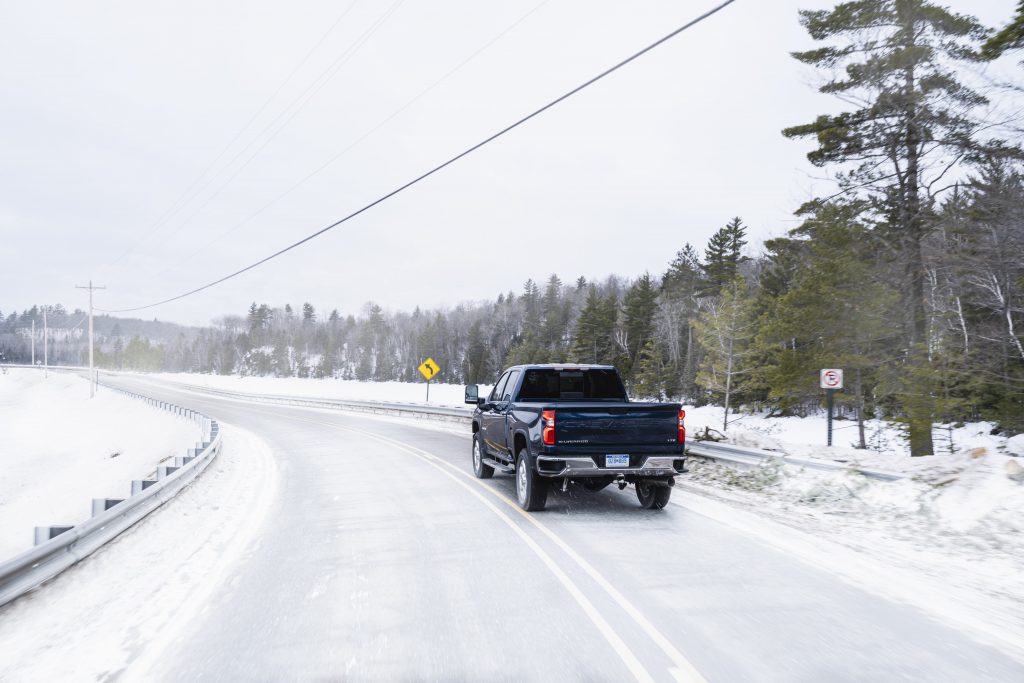Winter driving is coming, whether we like it or not. The weather is starting to turn in many parts of the country, which can mean slick roads and drivers that behave even worse than they would normally. Fortunately, you can control your own vehicle, but you’ll need to take some precautions to be sure you’re ready for the nasty winter driving season.
Many of you won’t have to worry about snow or ice, and that’s great, but winter can be a real challenge for a large portion of the winter driving population. If you’re used to commuting in bad weather, you likely already have some experience with what we’re talking about here, but for everyone else this is important stuff.
Here are some of the best ways to prepare your vehicle for winter:
Winter Tires
Let’s start here. If you drive a newer crossover or passenger car, there’s more than a great chance that it came from the factory with some flavor of all-season tire. All-season tires are popular with automakers, because they open up the ability to install one tire at the factory for a particular vehicle that can meet the needs of a majority of buyers across the country. That doesn’t mean that they’re the best tire choice for that majority of buyers. It just means that they are mostly suitable for a large swath of the car buying public.
All-season tires aren’t great for people who live in places where temperatures drop below 40 degrees Fahrenheit and stay there for weeks or months on end. The rubber compounds in all season tires are designed to stay pliable and grip the road down to about 40 degrees, and beyond that can become brittle or crack in extreme circumstances. Winter tires are the best way to ensure that your vehicle behaves the way you expect it to for winter driving. They’re also better able to “bite” into snow and ice.
Check Your Fluids
You probably understand the importance of checking your oil regularly, and may even glance at the other fluids under your hood, but preparing for winter is a little bit more involved. Engine oil is obviously important and should be changed at the proper times, but cold weather is demanding and can put a strain on vehicle components, such as the cooling/temperature regulation system, transmission, and even the windshield washer system. You may not think twice about some of those things on a daily basis, but it’s important to check fluids before hitting the road in winter. At a minimum check:
- Engine oil: Depending on your vehicle, you may need to switch engine oils when cooler weather sets in. Those funky numbers on your motor oil label? They tell you how an oil will perform when the engine is started col. Oil labeled 5w30, for instance, will move faster in cold temps than an oil labeled 10w30. The first number tells how quickly oils flow when cold, while the second number (30, in this case) tells us how thick the oil will be once it’s up to operating temperatures. In winter, it’s the first number that is most important, but you’ll need to consult your vehicle’s service manual to determine which oil weight is best.
- Antifreeze: Though the name might make you think that it’s only meant to protect against freezing, anti-freeze is an important part of a vehicle’s coolant system, and guards against overheating as well. Your vehicle should have a coolant/antifreeze reservoir that lets you easily view the fluid level, but if it does not, you’ll need to consult the service manual to figure out how to check the coolant levels.
- Windshield Wiper Fluid: Keeping your wiper fluid full won’t keep your car from running off the road, but it can keep you from running your car off the road if the windshield gets dirty. Part of what makes driving in winter such a pain is that, as other vehicles travel over salty, sandy roads, the moisture that gets kicked up into the air will inevitably end up caked onto the windshield of whatever’s traveling behind them. Since it’s salty, the mixture tends to dry out immediately and leave behind big white streaks on any surface unlucky enough to be afflicted.
- Battery: It’s true that your battery isn’t technically a “fluid,” but it does contain fluid, and it can be greatly affected by swings in temperature. Depending on the battery, it can lose as much as 60 percent of its original cranking power. Make sure you’ve checked the installation date and take note of a battery that is nearing the end of its projected useful lifespan.
Emergency Kit
Keeping an emergency kit in your car isn’t actually vehicle maintenance, it’s true, but you’ll want to pay attention to this one, maybe more than the other pointers here. That’s because an emergency kit can be the only thing standing between you and serious injury or death if you experience a problem while driving in winter. Your emergency kit should contain tools and supplies to keep you warm, hydrated, and fed, should you and your vehicle end up stuck somewhere for more than a few hours in the cold. Plan on keeping a box or small bag with these items in your vehicle for winter:
- Blankets: Wool blankets work well, because of their all-weather insulation power, but in general you should have at least one blanket in your emergency kit.
- Water: You won’t be able to carry bottled water in your trunk forever, but you should plan on keeping a few bottles in your kit that get changed out regularly.
- First Aid: A first aid kit is easy to source, easy to carry, and easy to use. Make sure you’ve got things like bandages, alcohol wipes, and even medications like Tylenol on hand.
There’s nothing “sexy” or particularly fun about prepping a vehicle for winter driving. In fact, it’s kind of a drag, but it’s a necessary drag, and could keep you safe if something goes sideways – especially your car.
(Article continues below)







